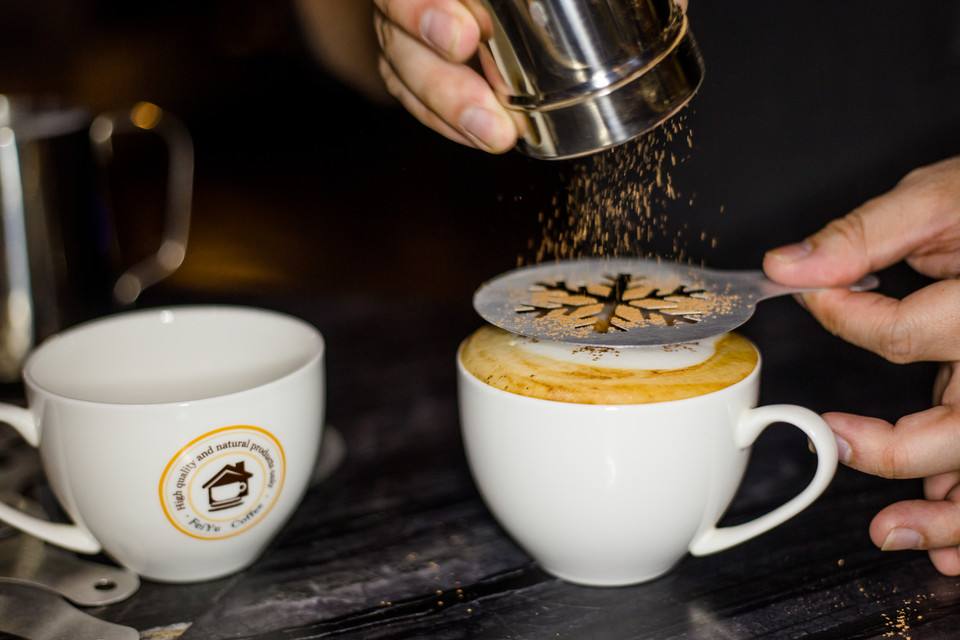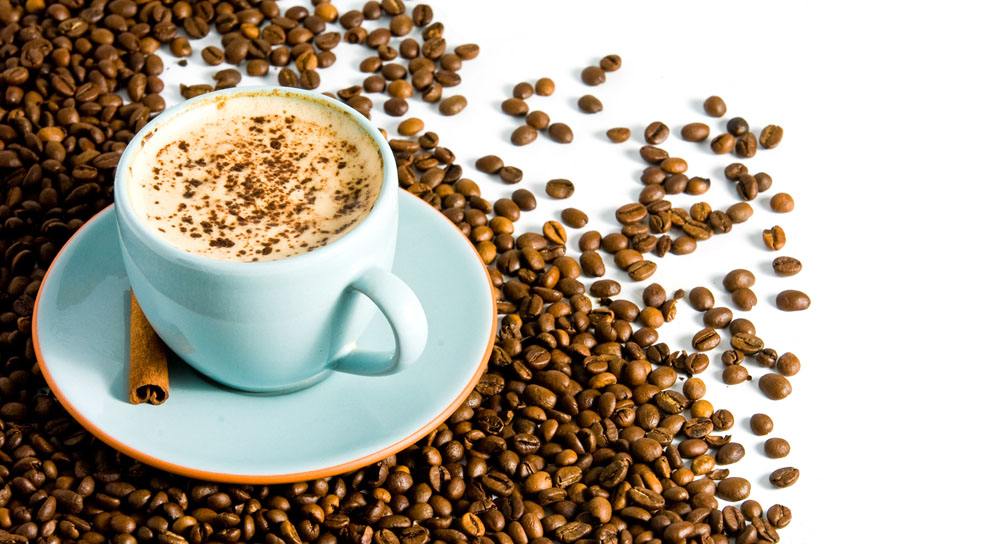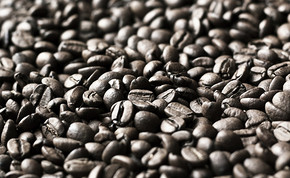Coffee baking is not only an art, but also a philosophy of life.
Follow the caf é (Wechat official account vdailycom) and found that Beautiful Cafe opened a small shop of its own.
Different degrees of heating of raw coffee beans will make coffee beans appear brown to black and other appearance color changes. The index of heating degree is called baking degree. The baking degree is generally distinguished according to the color of the baked beans.
The roasting degree of coffee in Japan is generally in the following order: light roasting, cinnamon roasting, medium roasting, high roasting, urban roasting, deep city roasting, French roasting and Italian roasting. These names come from American Light, Cinamon, Medium, Medium high, City, Full city, French (Dark), Italian (Heavy). In the United States, there are also baking degrees such as New England (between Light and Cinamon), Viennese or Continental (between Full city and French), and Spanish (baking degree is deeper than Italian).

Roasting degree and flavor are always closely related, although there are differences in degree, but the deeper the roasting degree of each kind of coffee is, the less sour and bitter it will be. Therefore, the degree of roasting is one of the bases for understanding the taste of coffee. However, the taste created by the degree of baking is affected to some extent by the type of raw beans. If the coffee is grown in Congo, it will hardly taste sour even if it is roasted lightly. If the Arabica coffee is grown on the plateau, even if it is deeply roasted, it will still have a sour taste. In addition, the names such as light baking and moderate baking are only generally used to indicate the baking degree, because these names depend on the baker's subjective judgment. It is not surprising that one store's city roasted coffee is more roasted than another store's French roast.
Coffee roasting is interesting, easy to learn but not easy to go deep into.
Human beings have thousands of years of experience in wine and tea. however, human beings have known coffee for only a little more than 700 years.
Four words can aptly express the feeling I have explored in the field of coffee baking: "the blind touch the elephant." Once upon a time, I thought I felt a specific shape, but it turned out to be nothing more than an elephant trunk. After a period of time, you may find that it is not all of the elephant trunk, but only a small part. The deeper you explore, the more you discover what you don't know and the more you don't understand.
Basically, coffee beans are very sensitive and meticulous in response to baking, and as long as there are small differences in some environmental variables, they can have a significant or very significant impact. The roasting of coffee beans is difficult to quantify, whether in terms of baking degree, roasting type, or baking quality. In particular, the latter must be judged by the natural sensory perception of "human". At present, there is not a set of complete and accurate standards in the world, which can accurately quantify the baking quality of coffee beans.
The professional knowledge about coffee bean roasting is very poor, and it is often filled with the sense of God and some secret recipes passed down by families. Compared with other areas of human knowledge, human beings are still in a relatively poor state in terms of the knowledge base of coffee roasting. The inheritance and education of professional coffee roasting is also very difficult. All sides are showing that this is not an easy way to go. On the road of learning coffee roasting, I must use rational thinking to make judgment and analysis (THINK) at any time, use perceptual perception system as assistant and judge (FEEL), and then repeat and verify (ROAST) .Think, Feel,Roast in a large number of practical work, the circle is always repeated, the three may be carried out in sequence or at the same time and equally important.
Coffee is a part of gourmet art (CulinaryArt), which is a part of human culture and is inseparable from human culture.
The more we learn, the more we realize that coffee roasting is not so much a science or art as a philosophy of rationality, sensibility and human nature.
Important Notice :
前街咖啡 FrontStreet Coffee has moved to new addredd:
FrontStreet Coffee Address: 315,Donghua East Road,GuangZhou
Tel:020 38364473
- Prev

Do you have the so-called caffeine gene?
Follow caffeine comments (Wechat official account vdailycom) found that Beautiful Cafe opened a small shop of its own. Do you have the so-called caffeine gene? Recently it was discovered that DNA determines whether we are susceptible to coffee. Investigators have made it clear that how many cups of coffee we can drink and how much we enjoy the aroma of coffee has long been determined by the body's genes. The genes control me.
- Next

Advice on coffee roasting
Follow the caf é (official Wechat account vdailycom) and found that the coffee roaster opened a small shop of its own and began to try to mix coffee recipes. He found that it would be good to match high-body and low-body beans (Sulawesi, Costa rica), but if you put a variety of high-acid coffee together, it may not be as smooth as we thought.
Related
- Beginners will see the "Coffee pull flower" guide!
- What is the difference between ice blog purified milk and ordinary milk coffee?
- Why is the Philippines the largest producer of crops in Liberia?
- For coffee extraction, should the fine powder be retained?
- How does extracted espresso fill pressed powder? How much strength does it take to press the powder?
- How to make jasmine cold extract coffee? Is the jasmine + latte good?
- Will this little toy really make the coffee taste better? How does Lily Drip affect coffee extraction?
- Will the action of slapping the filter cup also affect coffee extraction?
- What's the difference between powder-to-water ratio and powder-to-liquid ratio?
- What is the Ethiopian local species? What does it have to do with Heirloom native species?

